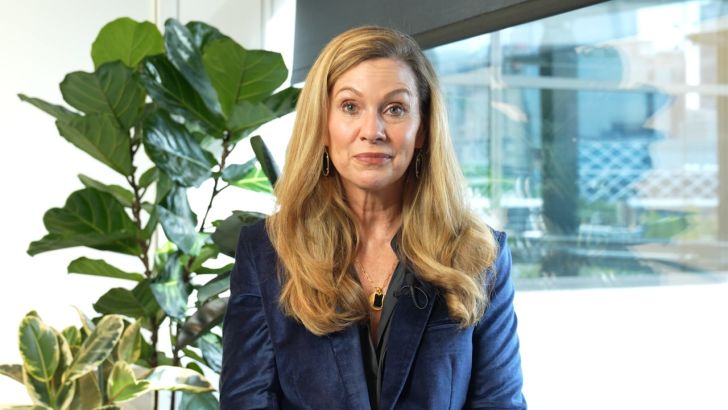Commonwealth Bank Forecasts Interest Rates to Remain on Hold Through 2026
Comyn Tells Parliament Inflation Pressures, Strong Labour Market Make Near-Term Rate Cuts Unlikely
This piece is freely available to read. Become a paid subscriber today and help keep Mencari News financially afloat so that we can continue to pay our writers for their insight and expertise.
Today’s Article is brought to you by Empower your podcasting vision with a suite of creative solutions at your fingertips.
Australia’s central bank is unlikely to reduce interest rates throughout 2026 as persistent inflation pressures and a resilient labour market keep monetary policy on hold, Commonwealth Bank CEO Matt Comyn told a parliamentary committee Tuesday.
The banking chief’s assessment represents a sobering outlook for millions of mortgage holders hoping for relief from elevated borrowing costs. Comyn stated that recent inflation data exceeded expectations and housing cost pressures remain a key concern, making rate cuts improbable despite signs of economic moderation.
“Our economics team’s forecast at the moment is that the cash rate will remain on hold for the foreseeable future,” Comyn stated during testimony before the parliamentary banking committee. “What does that practically mean? More likely than not through 2026.”
The projection extends Australia’s current elevated interest rate environment well into next year, with implications for housing affordability, business investment, and consumer spending. The Reserve Bank of Australia has maintained restrictive monetary policy to combat inflation that surged following the pandemic period.
Truth matters. Quality journalism costs.
Your subscription to Mencari directly funds the investigative reporting our democracy needs. For less than a coffee per week, you enable our journalists to uncover stories that powerful interests would rather keep hidden. There is no corporate influence involved. No compromises. Just honest journalism when we need it most.
Not ready to be paid subscribe, but appreciate the newsletter ? Grab us a beer or snag the exclusive ad spot at the top of next week's newsletter.
Committee questioning focused on whether economic data supports potential rate reductions in 2026. Comyn responded that Commonwealth Bank’s economic modeling suggests rates will remain elevated as the central bank prioritizes returning inflation sustainably within its target band.
“Given the persistent domestic inflation pressures and the strong population growth, is there anything in the data that leads you to believe that the RBA will be in a position to cut rates next year?” a committee member asked. “Based on your economic forecast, do you expect that the cash rate is going to be lower at any point in the course of 2026 than it is today?”
The CEO’s direct response emphasized the unlikelihood of near-term monetary policy easing. “No, I don’t think a reduction in the cash rate is likely in 2026,” Comyn stated, providing clarity on the bank’s economic outlook.
Commonwealth Bank serves approximately 16 million customers and operates extensive lending portfolios across residential mortgages, business credit, and other sectors. The institution’s economic assessments carry substantial weight given its market position and access to detailed transaction data across the Australian economy.
Comyn pointed to recent inflation data as a key factor shaping monetary policy expectations. “I think clearly the more recent CPI data was higher than we were and the RBA would have been expecting,” the CEO stated, referencing consumer price index readings that exceeded forecasts.
The banking chief noted that previous quarterly inflation data had shown encouraging progress toward the Reserve Bank’s target band. “If you’d asked me, with the quarterly print before that, it was looking obviously a very positive trajectory into the target band,” Comyn stated.
However, a subsequent inflation spike disrupted that positive trajectory. “I mean, there was a spike well above sort of what we or the RBA would have been modelling,” the CEO stated. “I think they were modelling 0.6% trim mean, and it came in at about one.”
The trim mean measure strips out extreme price movements to provide a clearer picture of underlying inflation trends. The significant variance between forecasts and actual results complicates the Reserve Bank’s assessment of when inflation will sustainably return to target levels.
Comyn characterized the labour market as remaining strong despite some volatility in monthly employment data. “The labour market remains strong,” the CEO stated. “I mean, there was a slightly weaker jobs data, then slightly stronger.”
The banking chief emphasized that near-term rate movements appear highly unlikely. “I think it’s certainly unlikely that rates will move in the near term,” Comyn stated. “And then we’ve just got to work through some of those issues to ultimately determine, well, I think first and foremost, getting inflation back into the target band and what sort of capacity there is in the economy.”
Committee questioning addressed the primary drivers of persistent domestic inflation. Comyn highlighted housing costs and construction as significant contributors to price pressures that complicate the Reserve Bank’s path toward inflation targets.
“I mean one of those sectors which we’ve touched on already already was dwelling or housing costs construction we’ve seen you know a pickup and acceleration there,” the CEO stated, identifying the housing sector as a key inflation pressure point.
The banking chief acknowledged uncertainty about whether current price pressures represent temporary factors or reflect sustained demand strength. “The real question is is that a temporary price pressure is some of that going to alleviate into 2026 and moderate or is are there other you know is demand stronger than we otherwise anticipate that there’s not enough sort of spare capacity in the economy,” Comyn stated.
The CEO suggested it remains too early to determine whether recent inflation readings represent a sustained pattern. “Certainly from my perspective, and then there are, of course, much greater experts than I am, it’s a little too early to tell,” Comyn stated.
However, Comyn emphasized that the Reserve Bank would likely prioritize ensuring inflation sustainably returns to target before adjusting monetary policy. “But I think there’d be a preference to make sure that inflation was back well and sustainably within the target band before there’d be an adjustment to the cash rate,” the CEO stated.
The testimony acknowledged that international factors could also influence domestic monetary policy decisions. “All things being equal, of course, things like the labour market, obviously international factors could also shape that and already do play a significant impact on the domestic economy,” Comyn stated.
Committee members questioned whether energy costs now constitute a structural driver of inflation pressures. Comyn acknowledged that energy costs have increased pricing pressures for households and businesses over many years.
“I think energy costs, of course, increase or have been an increase on pricing for many years for many households and for businesses,” the CEO stated. “I certainly don’t think Australia is going to be immune to that.”
The banking chief predicted ongoing scrutiny around energy pricing. “Understandably, I think there will be ongoing scrutiny around energy prices,” Comyn stated, acknowledging public concern about electricity and gas costs affecting household budgets.
The prolonged elevated interest rate environment presents challenges for mortgage holders facing higher repayment obligations. Many Australian households secured loans during the low-rate pandemic period and have experienced substantial payment increases as the Reserve Bank raised rates to combat inflation.
Commonwealth Bank’s forecast that rates remain on hold through 2026 suggests limited near-term relief for these borrowers. The outlook also affects business investment decisions, as elevated borrowing costs influence capital expenditure plans and expansion strategies.
Committee questioning also addressed productivity challenges affecting Australia’s economic performance. “The RBA has obviously lowered its productivity growth assumption to 0.7 per cent per annum,” a committee member noted. “Treasury is using an assumption of 1.2 per cent. What’s your bank’s house view on Australia’s productivity trajectory and how’s that shaping your lending risk settings and outlook for the wider economy?”
Comyn acknowledged declining productivity growth as a significant concern affecting living standards. “I couldn’t tell, but I’m happy to take it on notice about specifically what our forecasts might be,” the CEO stated, “but obviously I’d be very confident in the basis of which I would say that Australia, like many countries, has had sagging productivity growth now for some period of time.”
The banking chief characterized productivity improvement as critical for real income growth. “I think it is, of course, a very important determinant in terms of increases in real income and and living standards,” Comyn stated.
The CEO acknowledged productivity presents a difficult challenge requiring sustained focus. “At times it is a difficult problem. It requires a lot of focus,” Comyn stated, suggesting that addressing productivity weakness demands comprehensive policy attention.
Comyn indicated that technological advances might support productivity improvements. “Clearly some of the technology shifts that maybe I touched on very briefly earlier, and perhaps we can come back to, they will hopefully bring some productivity support,” the CEO stated.
The Reserve Bank has repeatedly emphasized that returning inflation sustainably to its target band remains the primary monetary policy objective. The central bank’s communications have suggested that achieving this goal may require maintaining restrictive policy settings for an extended period.
Commonwealth Bank’s forecast aligns with this framework by projecting that rates remain elevated through 2026. The assessment reflects interpretation of economic data suggesting that inflation pressures have proven more persistent than earlier anticipated.
The parliamentary hearing provided a platform for examining how Australia’s largest bank interprets current economic conditions and likely monetary policy trajectories. Committee members used the session to understand factors shaping the institution’s lending decisions and economic outlook.
Comyn’s testimony offers insight into banking sector perspectives on the inflation challenge and monetary policy outlook. The CEO’s direct statement that rate cuts appear unlikely through 2026 provides clarity for households, businesses, and investors planning financial decisions.
The prolonged elevated rate environment tests Australian households’ resilience while the Reserve Bank attempts to return inflation to target without triggering recession. The balancing act requires carefully calibrated monetary policy that moderates demand without causing excessive economic contraction.
Sustaining Mencari Requires Your Support
Independent journalism costs money. Help us continue delivering in-depth investigations and unfiltered commentary on the world's real stories. Your financial contribution enables thorough investigative work and thoughtful analysis, all supported by a dedicated community committed to accuracy and transparency.
Subscribe today to unlock our full archive of investigative reporting and fearless analysis. Subscribing to independent media outlets represents more than just information consumption—it embodies a commitment to factual reporting.
As well as knowing you’re keeping Mencari (Australia) alive, you’ll also get:
Get breaking news AS IT HAPPENS - Gain instant access to our real-time coverage and analysis when major stories break, keeping you ahead of the curve
Unlock our COMPLETE content library - Enjoy unlimited access to every newsletter, podcast episode, and exclusive archive—all seamlessly available in your favorite podcast apps.
Join the conversation that matters - Be part of our vibrant community with full commenting privileges on all content, directly supporting The Evening Post (Australia)
Catch up on some of Mencari’s recent stories:
It only takes a minute to help us investigate fearlessly and expose lies and wrongdoing to hold power accountable. Thanks!








